
Variegated Rubber Plant Guide How to Grow & Take Care of your Plant
Cost: $15-$50 Winner of the most stunning variegation (awarded by us) Variegated Rubber Tree The Rubber Tree or Ficus elastica 'Variegata' is native to South Asia and Southeast Asia. From the Moraceae plant family, the rubber tree gets its name from its thick, shiny, rubbery leaves.
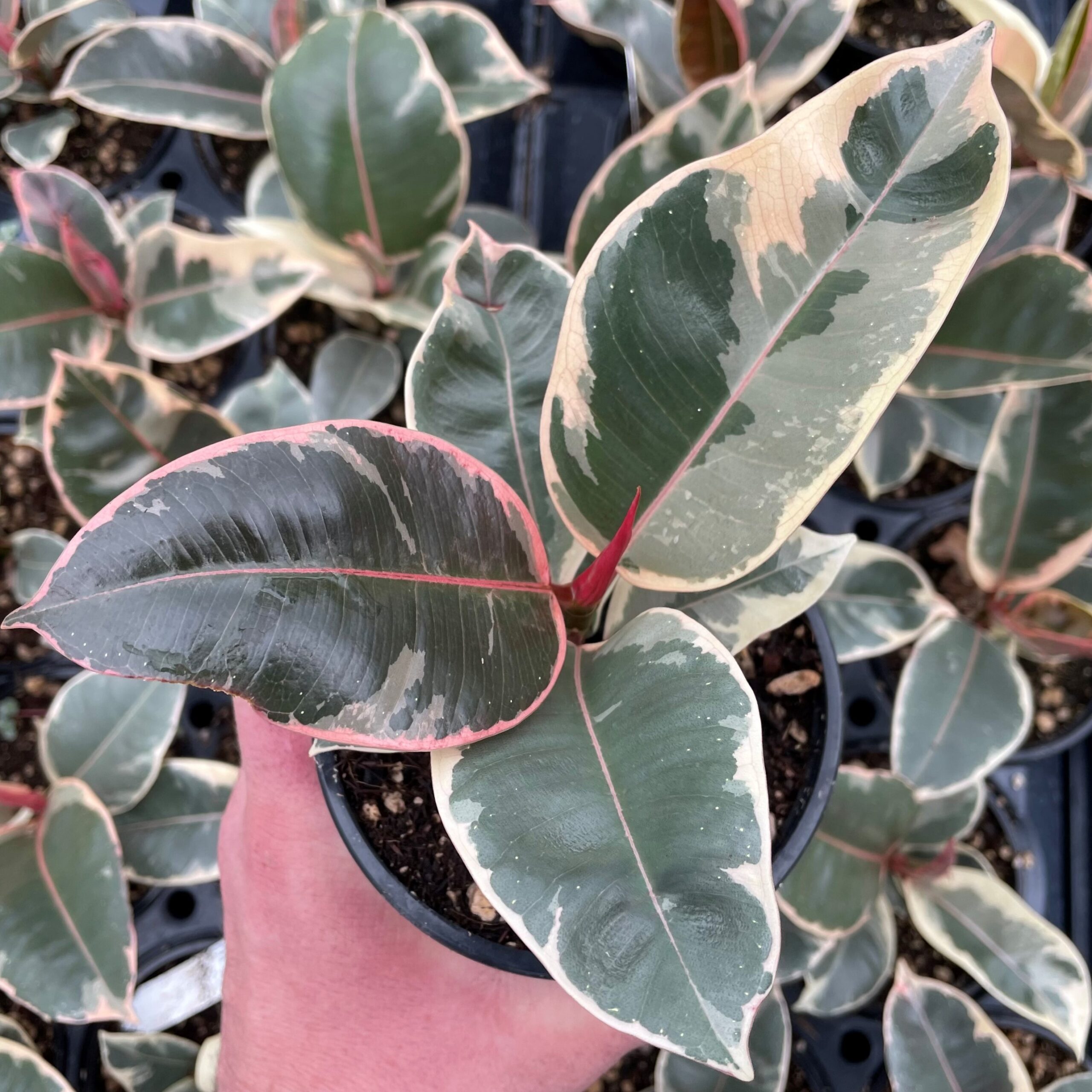
Ficus elastica 'Tineke' Variegated Rubber Tree (4.5" Pot) Little Prince To Go
The Variegated rubber tree (variegated ficus elastica ) is an eye catching regal variation on the solid colored cultivars of the rubber tree plant. Rubber plants are very common, well loved houseplants. The care needs are simple. This is a Great plant for Beginner Plant Parents. You will find rubber plants in many local garden shops.
Reddit Dive into anything
A few common types include "Tineke," which includes white on all the leaves tips; "Ruby," which has pink on all the edges of the leaves; and "Burgundy," which produces a fully dark red leaf. This plant is native to South and Southeast Asia and can grow to over 40 feet tall in nature. However, inside a home, they'll likely be up to 10 feet.
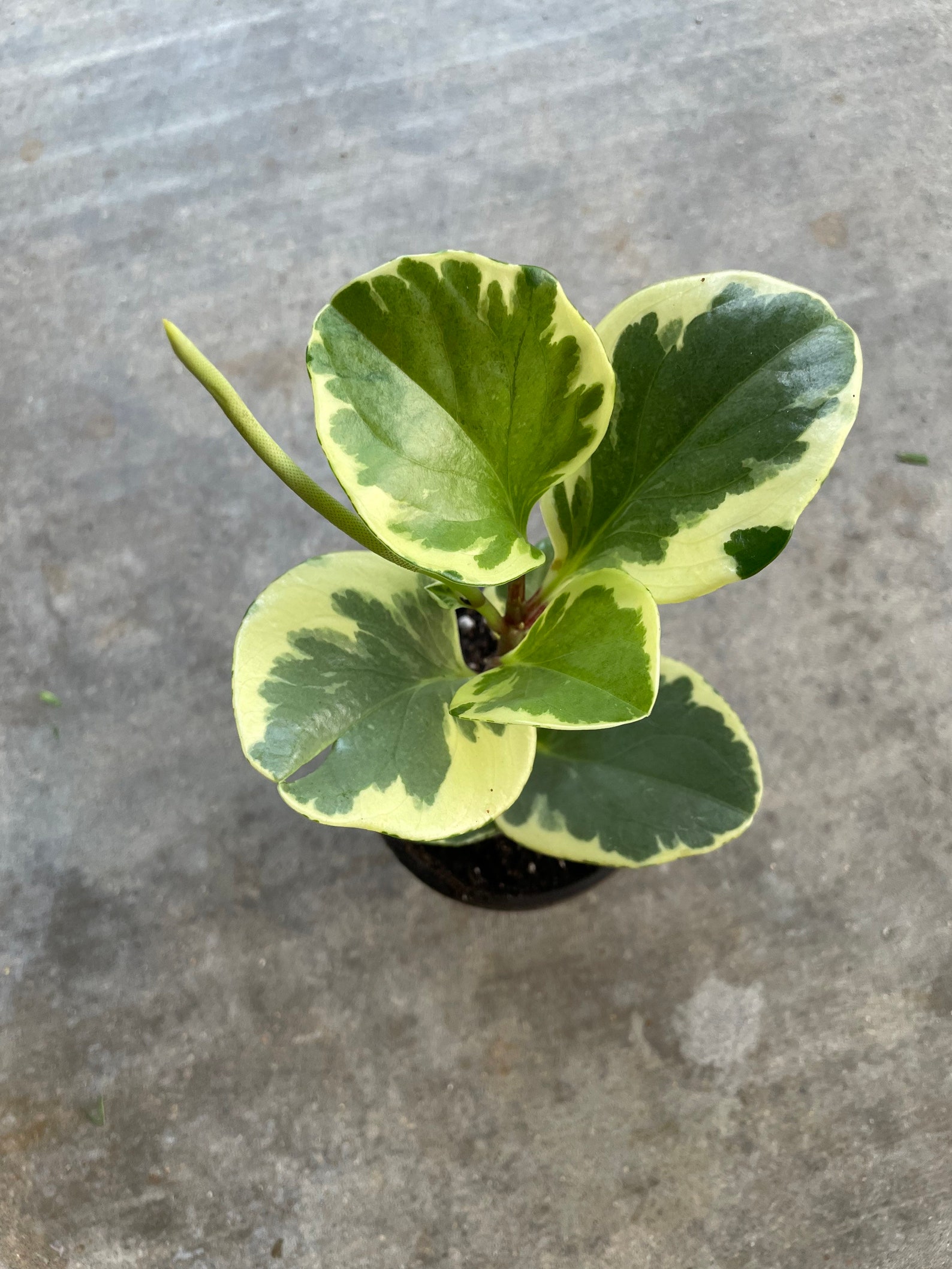
Rare Variegated Baby Rubber Plant Peperomia Obtusifolia LIVE Etsy
The ideal temperature for your Variegated Rubber Plant is room temperature - specifically this ranges between 60 and 65 degrees F at night and 75 to 80 degrees F during the daytime. Avoid temperatures below 55 degrees F though. Watch that your plant isn't exposed to sudden drops in temperature or cold drafts.
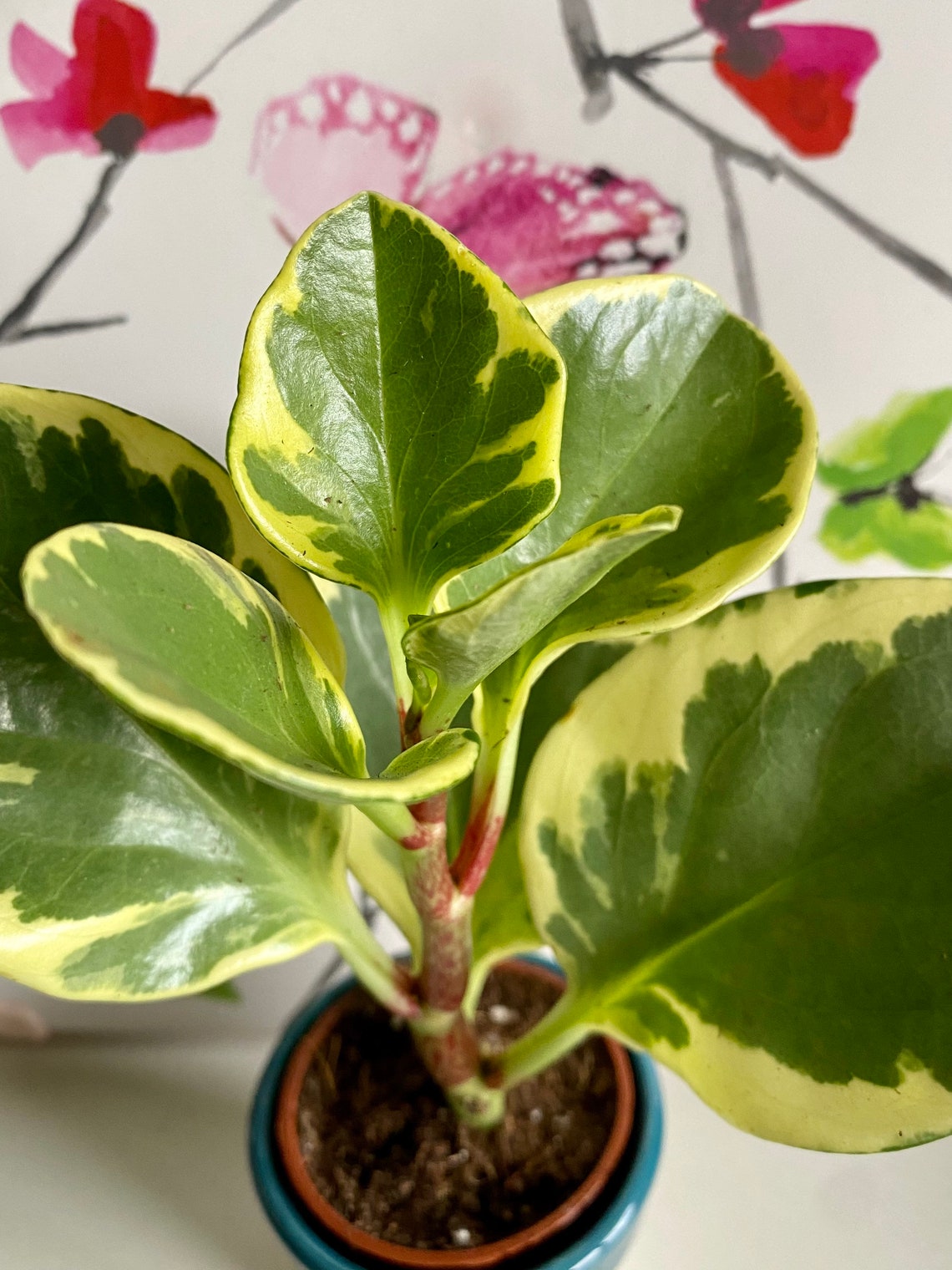
Variegated Baby Rubber Plant Peperomia Obtusifolia Lemon & Etsy
Ficus elastica, otherwise called the rubber plant, is a strange-looking varietal local to the jungles of Southeast Asia. This seemingly perpetual plant flaunts curiously large, oval-formed leaves with a rich emerald shade and can develop rapidly, arriving at up to 100 feet tall right at home.

PlantFiles Pictures Ficus, Indian Rubber Fig, Rubber Tree, Variegated Rubber Plant 'Variegata
The variegated rubber plant, also known as a variegated rubber tree, has variations called Ficus elastica tineke and Ficus Elastica Ruby. All of these are the same thing: Rubber plants with color variation on the leaves, from dark green to whiteish yellow, with either hints of pink (tineke) or brightly pink (Ruby) edges and stems.
Had this variegated rubber plant for just over a month... grown about 10 new leaves r/houseplants
by Outside In May 18, 2021. A variegated cultivar of the traditional rubber tree, the Ficus Tineke is a gorgeous and colorful houseplant. With hues of light green, cream, and even some pink, this indoor plant makes a soft but striking statement. The Ficus Tineke is moderately simple to care for, just make sure to provide bright light and water.

Pink Variegated Rubber Plant! Also Known as the Ficus Belize We LOVE the Pink Variegation on
If you're looking for a new and rare plant to add to your indoor collection, a Ficus Elastica "Ruby", also known as a Variegated Rubber Tree, is a great choice. I've had mine for over 6 years, and it is still one of my favorite plants. I love the variegation so much!

Plant Portrait Variegated Rubber Plant Leaf and Paw
The variegated rubber plant indoors grows between 4′ - 6′ feet tall and 2′-3′ feet wide. When choosing a space, make sure to allow for 3′-4′ feet across for growth space. Flowering and Fragrance. Rubber plant flowers are small and green. They aren't fragrant or bright. Instead, the variegated rubber plant has large, colorful leaves.

Variegated Rubber Plant Vancouver Plant Rentals
Variegated rubber trees are more expensive than their dark-leaved relatives for a couple of reasons. First, they require more care than most other plants. They need more water, they require slightly brighter light than their dark-leaved counterparts, and you should also avoid drafts that could harm the leaves or branches.
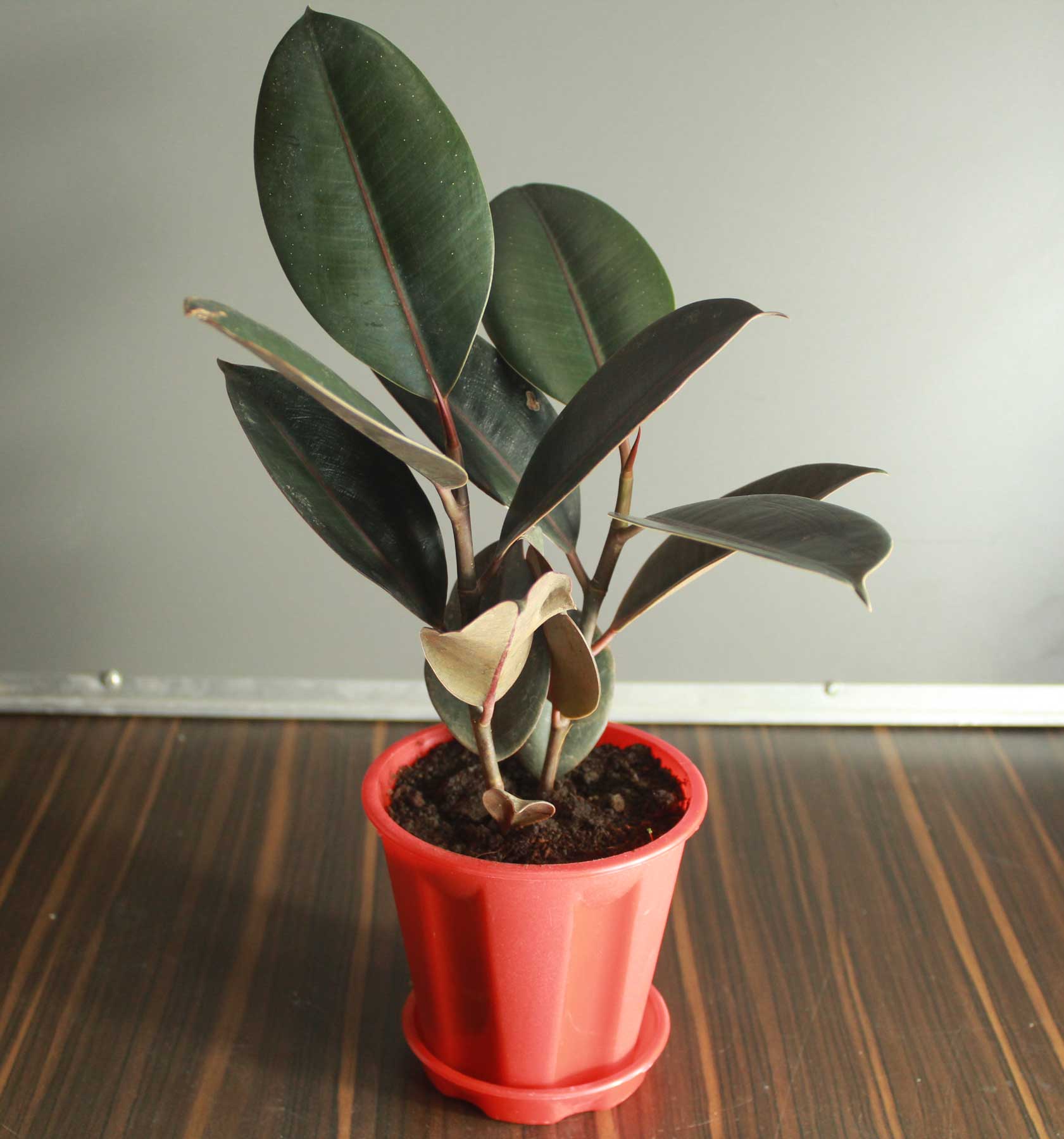
Buy Ficus Elastica Black Rubber Plant Nursery Nisarga
Variegated Rubber Plant has red midribs and bright, creamy yellow margins on each leaf. Perfect for bringing color and life to entry areas, empty corners and mixed plant groupings! Rubber Plants are a popular houseplant choice due to their ease of care, attractive foliage and tree-like presence. Uses. Perfect for all kinds of containers.
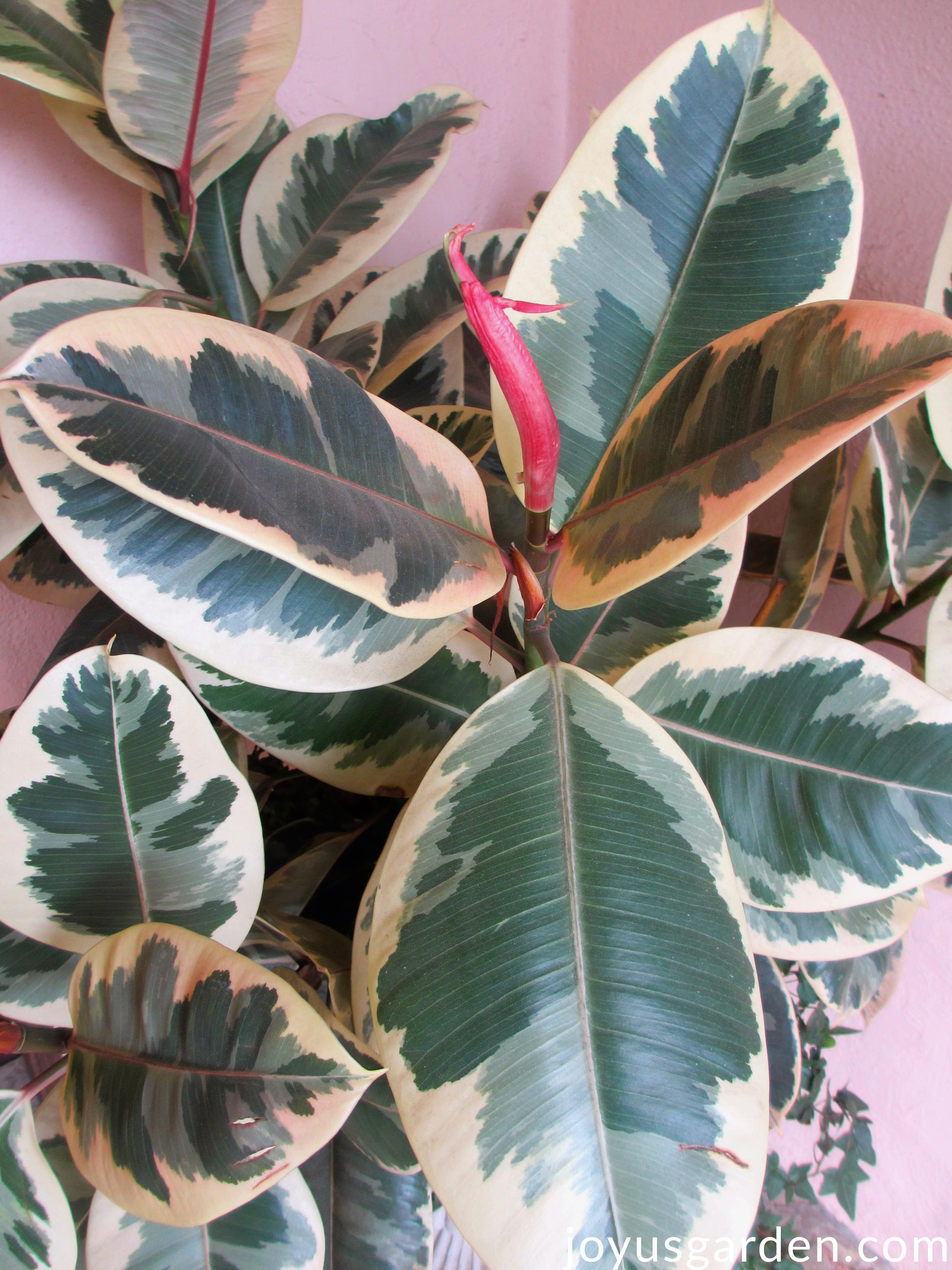
Rubber Plant Growing Tips for this Easy Care Indoor Tree
Ficus elastica is the scientific name of a species of plant that is part of the fig (ficus) genus and Moraceae family. It has a whole slew of common names including Indian Rubber Bush, Indian Rubber Tree, Rubber Fig, Rubber Bush Rubber Plant and Rubber Tree Plant. In nature, this large tree can grow as tall as 30-40 meters (100-130 feet).

Variegated Rubber Tree Plant Houseplants with Beautiful Leaves Pinterest Ficus elastica
Ficus shivereana ( Ficus elastica 'Shivereana') is a hybrid rubber plant known for its colorful, variegated foliage. This rare houseplant is native to the jungles of Southeast Asia. Its neon green or yellow leaves are splashed with speckles of darker green, and new growth is often pink as it emerges.
Help! I recently got a tineke rubber plant from r/takeaplantleaveaplant and the leaves came all
The Variegated rubber plant or Ficus elastica variegata, as it's also known, is used to warm tropical climates as it's native to South and Southeast Asia. It has beautiful, shiny, colorful leaves that really stand out in your home. The leaves are thick and have an almost rubbery look and feel, which is where it gets its name.

Plant Portrait Variegated Rubber Plant Leaf and Paw
The variegated rubber plant, as it's sometimes known, often features striking reddish-pink tones on the outside of the green and cream foliage, and the sheath at the top of the stem is also a deep burgundy-red color.

“Variegated Rubber RT1home” Plant leaves, Indoor plants, House plants
Variegated rubber plants thrive in lots of indirect light and aren't picky about the humidity levels. A humidity of 40-50% is sufficient. The temperature should be between 60 to 70 degrees Fahrenheit (15 to 21 degrees Celsius). Feed them with a high-phosphorus fertilizer once weekly for optimum growth. Soil